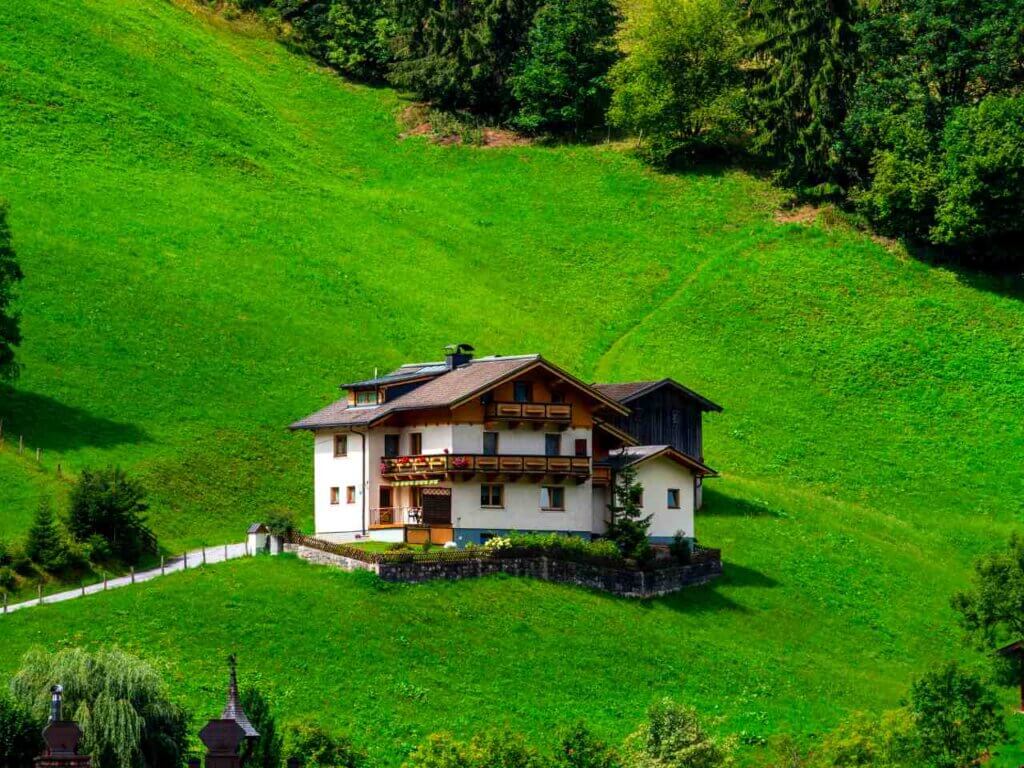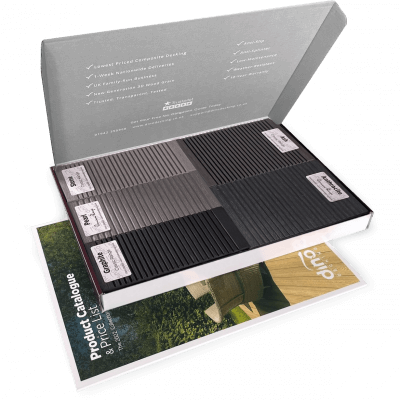5 Composite Decking Lighting Ideas
Our composite decking looks great in any setting, but you can really make your outdoor spaces shine with our decking
Products in Stock
Lowest Prices
Express Delivery
10-Year Warranty
Bank Holiday Weekend Sale. Up To 15% Off.

Right, let’s be honest, not all gardens are perfectly level. Some of us are blessed (or cursed, depending on your perspective) with sloping lawns that add a bit of character, but also a whole lot of challenge when it comes to fencing. That said, installing a fence on a slope is entirely achievable, and with a bit of know-how and determination, you can conquer those inclines and create a stunning boundary for your outdoor haven.
Whether you’re envisioning a charming picket fence cascading down a gentle slope or a sturdy panel fence conquering a steeper incline, this guide will equip you with the knowledge and confidence to tackle your fencing project head-on. So let’s get started!
Before we jump into the nitty-gritty of installation, let’s take a moment to understand the challenges and considerations of sloping terrain.
Slopes come in all shapes and sizes, from gentle gradients to steep inclines. Understanding the type of slope you’re working with will help you choose the most appropriate fencing method and ensure a secure and aesthetically pleasing result.
Installing a fence on a slope requires careful planning and execution. Ignoring the slope can lead to a wonky fence, instability, and even potential safety hazards. But with the right approach, you can create a fence that not only complements your garden’s contours but also stands the test of time.
Before you embark on your fencing adventure, gather your arsenal of tools and materials:
Proper preparation is crucial for a smooth and successful fencing project.
Accurately measure the length and slope of the area where you’ll be installing the fence. This will help you determine the number of posts and panels you’ll need and ensure you have enough materials.
Before you start digging, check with your local council for any planning permission requirements or building regulations that might apply to your fencing project.
Consider the style of your fence, the height you desire, and the spacing between posts. Sketch out a plan to visualise the final result and ensure it complements your garden’s overall design.
There are three main methods for installing fencing on a slope:
This method involves following the natural slope of the land, creating a fence that flows with the contours of your garden. It’s ideal for gentle slopes and creates a natural, undulating effect.
This method involves creating a series of steps in the fence line, with each panel installed at a slightly different height to accommodate the slope. It’s suitable for steeper slopes and provides a more structured and formal appearance.
This method involves adjusting the angle of the fence panels to follow the slope, creating a continuous and level top line. It’s suitable for moderate slopes and provides a clean and modern aesthetic.
Regardless of the method you choose, follow these best practices for a secure and long-lasting fence:
Ensure your fence posts are set deep enough in the ground to provide adequate support and stability. Use concrete to secure the posts and prevent movement.
On steeper slopes, consider using longer posts or additional bracing to enhance the stability of your fence.
Regularly inspect your fence for any signs of damage, rot, or loose fittings. Address any issues promptly to prevent further deterioration and ensure the longevity of your fence.

Here are a few common mistakes to avoid when installing a fence on a slope:
Inaccurate measurements can lead to gaps, uneven panels, and an unstable fence. Take your time and double-check your measurements to ensure accuracy.
On sloping terrain, proper drainage is essential to prevent water build-up and potential damage to your fence. Ensure the ground slopes away from the fence to allow water to run off freely.
Always check with your local council for any planning permission requirements or building regulations that might apply to your fencing project, as ignoring these guidelines can lead to costly fines or even the removal of your fence.
Installing a fence on a slope might seem impossible, but it’s not! All you need is careful planning, the right tools, and a bit of elbow grease, and it becomes a perfectly achievable DIY project. In understanding the different installation methods, following best practices, and avoiding common mistakes, you can create a beautiful and functional fence that complements your sloping garden and stands the test of time.
If you’re ready to tackle your fencing project, explore our wide range of high-quality fencing materials, including our high quality composite fencing. Composite fencing offers exceptional durability, weather resistance, and a variety of styles to suit any garden design, and we’ll even send you a free sample to try at home first, so why not give it a go?

Our sample pack contains a sample piece of each colour currently available. Order your free sample pack today to compare the colours and get a true feeling of the Dino Decking range!
Our composite decking looks great in any setting, but you can really make your outdoor spaces shine with our decking
If the idea of having rats under your decking makes you shiver, don’t worry. We’ll let you know the signs
Business hours
Monday: 09:00 – 17:30
Tuesday: 09:00 – 17:30
Wednesday: 09:00 – 17:30
Thursday: 09:00 – 17:30
Friday: 09:00 – 17:30
Saturday: Closed
Sunday: Closed
Contact us
01942 355968
support@dino.co.uk
Collection Address: Unit 1 Wetheral Close Hindley Ind Estate Wigan Greater Manchester North West WN2 4HS
Pages
Products
Testing
Copyright 2025 Dino Decking Ltd All Rights Reserved.
VAT Number: GB296097848.
Company Number: 10837233.